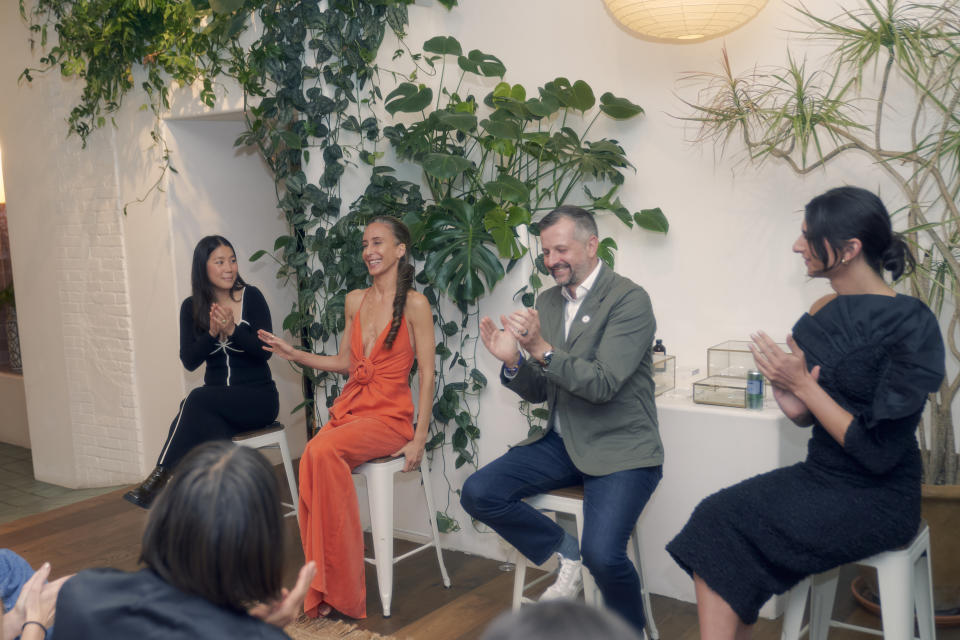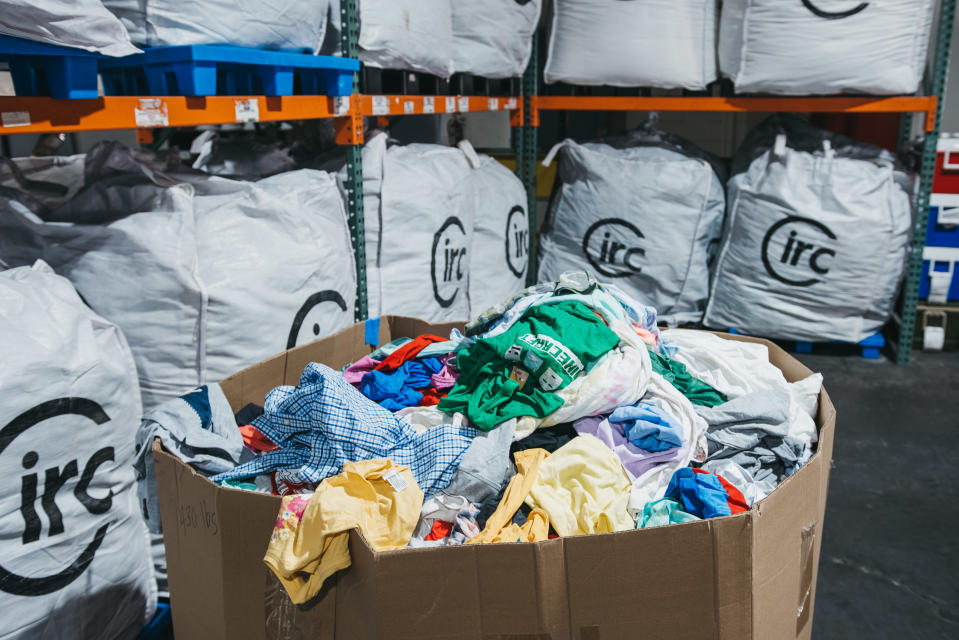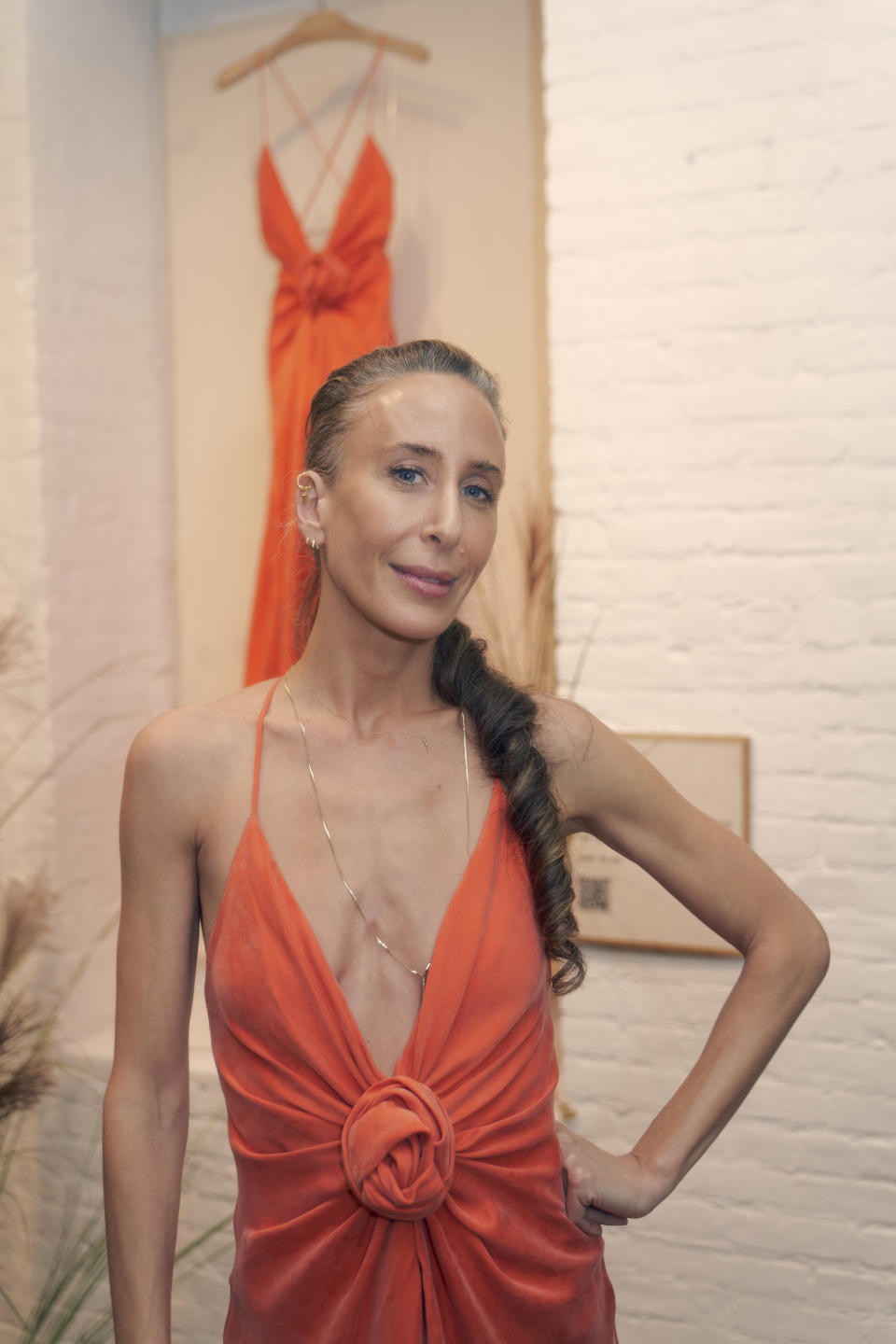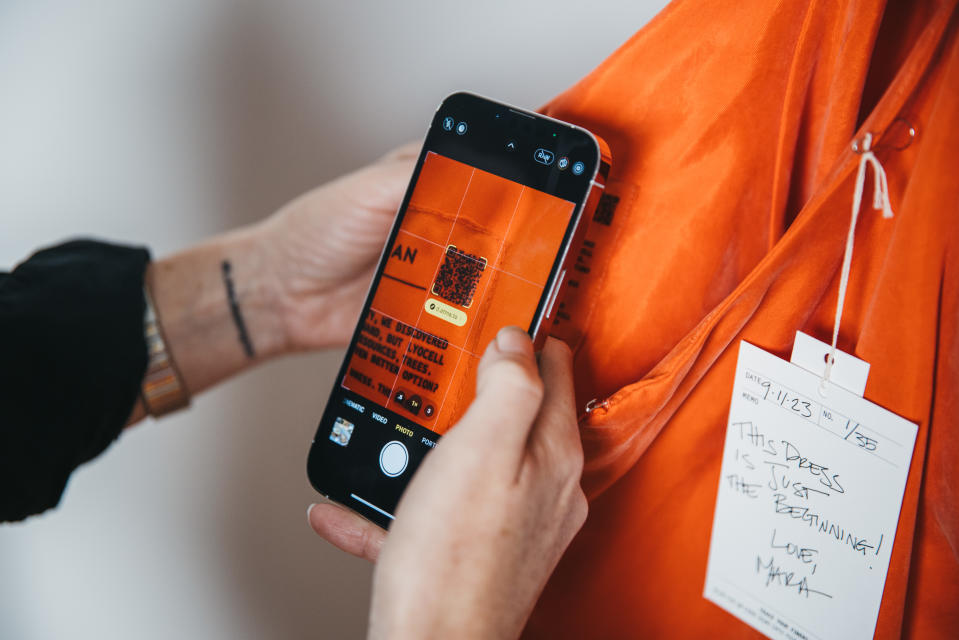How Mara Hoffman Created This Fully Recyclable $1,195 Dress

Mara Hoffman‘s newest poppy-colored creation was born from a focus on the future.
And that future, according to the designer of the namesake New York brand, is being written by startups such as Circ, the Earthshot prize finalist whose textile waste recycling technology is helping to bring true fashion circularity within reach.
More from Sourcing Journal
UConn Researcher Tackles Protein's Possibilities for Plastic
Should Forced Labor 'Trump' Sustainability? Recover Doesn't Think So
In the United States alone, an estimated 34 billion pounds of clothing and textile waste are sent to landfills globally each year, according to a Boston University study. Today, the average consumer purchases 60 percent more clothing than they did 15 years ago—but they typically keep items only half as long. Waste is a pervasive problem throughout the fashion and apparel industry—and just 15 percent of post-consumer textiles are recycled.
This stark reality is what inspired Mara Hoffman to see what was possible with Circ’s approach to birthing like-new fashion fibers from cutting-room scraps and post-consumer clothing castoffs.
The designer debuted the fruits of the small-batch collaboration at an event at the brand’s store in New York City’s SoHo neighborhood on Tuesday evening.

Circ lyocell, which encompasses 50 percent recycled materials and 50 percent wood pulp, was used to create the Nyssa dress, which she dubbed, “The Dress that Changes Everything.” Just 35 are available.
Hoffman has been using virgin lyocell in her designs since 2015. But the brand’s partnership with Circ takes that green tie-in one step further, said Dana Davis, Mara Hoffman’s vice president of sustainability, product and business strategy.
“In 2015, it felt like a really big win to move away from polyester into these man-made cellulosic fibers. But we always kind of felt this need to keep searching for what else existed so that we didn’t have to rely on natural resources, especially the trees,” Davis said.
Circ lyocell is made via a process called hydrothermal blended textile recycling, which begins with poly-cotton blends. The process teases the components in these textile blends apart, and turns them into like-new fibers that manufacturers can stitch into new garments, giving brands a true circular storytelling element.
The collaboration represents the first fully baked American luxury garment to come to market using Circ lyocell. For Peter Majeranowski, the president of the Virginia-based startup and Vivobarefoot partner, the launch represents a promising hallmark.
“We’re just really excited that we can make this really technical stuff look beautiful for the consumers. You don’t need to compromise fashion style [or] functionality for circularity, and that’s the big point,” Majeranowski said.
But using Circ’s filaments and fibers to create textiles on par with virgin required cooperation from manufacturers—not just willingness from Hoffman’s brand. Davis said Circ’s team took on the lion’s share of that responsibility.
“We wanted to get our supply chain partners on board with understanding what it was going to be like to work with this fiber. Circ was really great about sitting with our manufacturing partners deep into our supply chain and giving them an understanding of what they’d learned through their process,” Davis said.
Majeranowski told Sourcing Journal that progress did not come without hurdling a few obstacles.
“I think you could categorize the challenges in two areas. One is that you’re now working with a recycled material. Supply chain is very hyper-competitive—margins are thin; risk tolerances are not very high. So you have to get the supply chain comfortable with using something different and build that trust and confidence,” he said. “The second one is that… we’re using a filament lyocell, which there’s not a lot of out there in the market right now. … We had to get fabric developers comfortable with using [Circ’s] filament.”

Hoffman told Sourcing Journal that Circ’s lyocell comes in at a higher price point than the virgin version her brand has been using for nearly a decade. She expects those costs to drop as the brand continues its partnership with Circ at a greater scale.
That prospect is on the immediate horizon; Hoffman’s brand has committed to phase out its use of virgin lyocell and man-made cellulosics over the next three years. It will instead use Circ lyocell throughout its man-made cellulosic fiber portfolio.

Hoffman shared how her label will operationalize that goal.
“With Circ getting the momentum that they’re getting—and hopefully the additional resources and pick up—we’re going to be able to move quicker, we’re going to be able to work in larger percentages, as far as like material makeups that we’re able to use,” Hoffman told Sourcing Journal.
And once other brands and companies demonstrate interest, Majeranowski said, the startup is ready to scale.
“We’re right now in the process of looking at sites for our first really large-scale, integrated factory, which would be 20 times larger than what we’re doing today. That’s how we’re going to bring this to the broader industry,” he said. “But that’s just the beginning, because that factory will do about 65,000 tons per year, into an industry that’s producing over 100 million tons a year of new fibers for clothing and other textile applications. Our intention is to certainly not stop with factory one—we want to accelerate from there.”
Where sustainability efforts are concerned, bringing consumers into the journey has become increasingly popular, with traceability solutions and startups showing up in the market at a rate previously unseen. Mara Hoffman’s latest launch incorporates behind-the-scenes features to help consumers better understand the sustainable origins of the Nyssa dress.
The 35 dresses, which retail for $1,195 each, come with their own unique QR code, printed on scrap fabric and sewn into the dress, offering consumers a glimpse into every step of the supply chain. Avery Dennison, the trims and labeling powerhouse and one of Circ’s investors, enabled the traceability component.

When scanned, the QR code shows consumers where—and how—the garment was made. But it also tells them how the dress can be cared for, and eventually, recycled. Hoffman said she hopes the people who purchase the Nyssa dress return them to her brand—after a long life, of course. This would allow the brand, through its partnership with Circ, to use the fabric to create something entirely new.
Michael Colarossi, Avery Dennison’s vice president of product line management, innovation and sustainability, said the labels enable consumer empowerment and bolster the supply chain.
“Today, most consumers don’t have access to that information, so this technology not only enables education, but it turns the power over to the consumer to act so that they can be part of driving circularity because that’s such an important part [of the equation],” Colarossi said. “In this case, it’s about telling Mara Hoffman’s story around the garment; it’s about enabling return and resale and the circularity of that garment; it’s about communicating the Circ technology. On the supply chain side, it actually allows us to enable automated sortation—a big need for the recycling industry.”
For Hoffman, the launch is a way to get other brands and designers’ attention. She remains hopeful that other brands will begin considering Circ lyocell—and other sustainable fibers and textiles—in their production processes.
“I think that there’s an important emphasis on collaboration—and I think that we all have to be consistently seeking them out, talking about them, encouraging them, normalizing them, in order to have any level of progress,” Hoffman told Sourcing Journal. The work that we’re trying to do here we have to get on board with not being proprietary, seeking out people that know more than you do, and then helping those that aren’t as far along as you are.”

